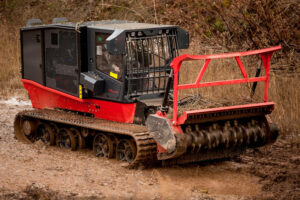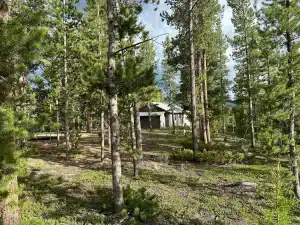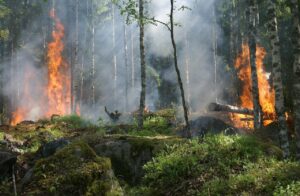Wildfires have caused devastation across many of the western states, but a unique set of circumstances in Colorado has led the threat of wildfires to be a particular concern for residents of our state.
1. Colorado Suffers from Years of Mismanaged Forests
Mismanaged forests and outdated wildfire mitigation practices are among the greatest challenges facing landowners in Colorado. Decades of fire suppression and a lack of active management have left Colorado’s forests overgrown and full of hazardous fuels. The Colorado State Forest Service has found that roughly 834,000 acres of forest in Colorado are at high risk of wildfire.
2. Wildfire Suppression is Critical
Wildfire suppression is critical to protecting homes and communities from wildfire. In Colorado, the role of wildfire suppression falls to the Colorado Division of Fire Prevention and Control (DFPC). The DFPC works closely with local fire departments, federal agencies, and other stakeholders to respond to wildfires and prevent them from spreading.
One of the challenges faced by the DFPC is the rugged and mountainous terrain of Colorado, which can make access difficult for firefighting equipment and personnel. The state also experiences a high number of lightning strikes during the summer months, which can ignite wildfires in remote areas.
3. Pine Beetle & Other Pests
The state’s forests are also vulnerable to pests such as the mountain pine beetle, which has devastated millions of acres of forest in Colorado. The beetle kills trees by burrowing into the bark and laying eggs, which destroys the tree’s ability to transport water and nutrients. The dead, dry wood left behind by the beetle is highly flammable and fuels wildfires.
The pine beetle and spruce beetle have damaged more than 1.7 million acres of pine and spruce trees in Colorado. The beetles attack healthy trees and kill them within a few years. The loss of these trees not only impacts the ecosystem but also increases the risk of wildfires.
The emerald ash borer is another invasive species that is a threat to Colorado’s forests. EAB infestations have caused significant damage in other states, including Michigan, Ohio, and Indiana. If the beetle reaches Colorado, it could have devastating consequences for the state’s ash trees.
4. Colorado’s Population Growing at a Rapid Rate
Colorado’s population is growing at a rapid rate, and this growth is putting more homes and communities at risk of wildfire. Data from Colorado State Demography Office show that the state’s population is projected to reach 7.8 million by 2040, up from 5.8 million in 2020.
As more people move into the WUI, the risk of wildfires increases. The WUI is the area where homes and communities are located within or adjacent to natural vegetation. These areas require special attention and management to reduce the risk of wildfire. Homeowners in the WUI can take steps to mitigate wildfire risk by creating defensible space around their homes and using fire-resistant materials when building or renovating.
5. More People Living in Colorado’s Wildland Urban Interface
The expanding Wildland Urban Interface (WUI) is one of the fastest-growing challenges facing Colorado’s wildfire mitigation efforts. More people are living in the WUI than ever before, and this trend is expected to continue. A report by Headwaters Economics states that the number of homes in the WUI in Colorado increased by 45% from 1990 to 2010.
As more homes are built in the WUI, the risk of wildfire increases. Homes located in the WUI are more vulnerable to wildfire because they are surrounded by natural vegetation, which can act as fuel for a wildfire. To reduce the risk of wildfire, it is essential to manage the vegetation around homes and create defensible space.
As someone who owns a home and land in Colorado, this topic is not merely academic for me. Creating safer forests and a healthier ecosystem in our state are some of the primary reasons that I started Bear Claw Land Services.
If you would like to learn more about creating a wildfire mitigation strategy for your property, call Bear Claw Land Services today to schedule a free consultation. By working together, we can protect homes, communities, and natural resources from the devastating effects of wildfire.





